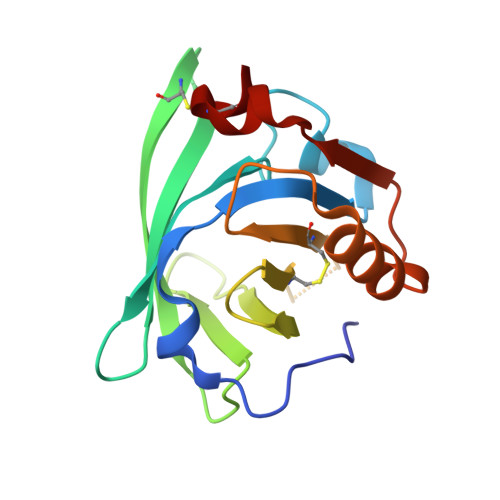Ligand-binding and self-association cooperativity of beta-lactoglobulin
Gutierrez-Magdaleno, G., Bello, M., Portillo-Tellez, M.C., Rodriguez-Romero, A., Garcia-Hernandez, E.(2013) J Mol Recognit 26: 67-75
- PubMed: 23334914
- DOI: https://doi.org/10.1002/jmr.2249
- Primary Citation of Related Structures:
4GNY - PubMed Abstract:
Unlike most small globular proteins, lipocalins lack a compact hydrophobic core. Instead, they present a large central cavity that functions as the primary binding site for hydrophobic molecules. Not surprisingly, these proteins typically exhibit complex structural dynamics in solution, which is intricately modified by intermolecular recognition events. Although many lipocalins are monomeric, an increasing number of them have been proven to form oligomers. The coupling effects between self-association and ligand binding in these proteins are largely unknown. To address this issue, we have calorimetrically characterized the recognition of dodecyl sulfate by bovine ¦Â-lactoglobulin, which forms weak homodimers at neutral pH. A thermodynamic analysis based on coupled-equilibria revealed that dimerization exerts disparate effects on the ligand-binding capacity of ¦Â-lactoglobulin. Protein dimerization decreases ligand affinity (or, reciprocally, ligand binding promotes dimer dissociation). The two subunits in the dimer exhibit a positive, entropically driven cooperativity. To investigate the structural determinants of the interaction, the crystal structure of ¦Â-lactoglobulin bound to dodecyl sulfate was solved at 1.64 ? resolution.
Organizational Affiliation:
Instituto de Qu¨ªmica Universidad Nacional Aut¨®noma de M¨¦xico, Circuito Exterior, Ciudad Universitaria, M¨¦xico, DF 04630, M¨¦xico.
















